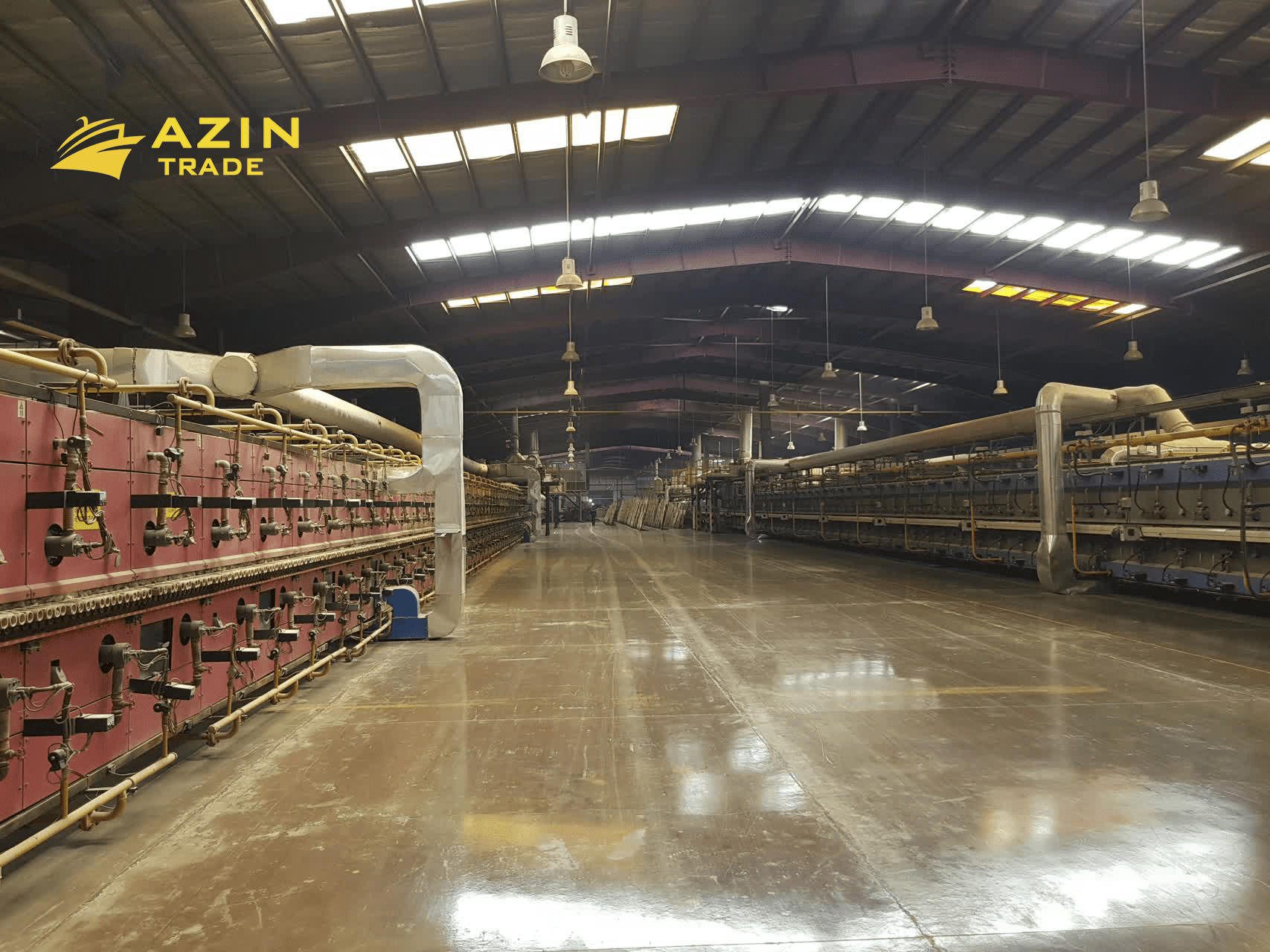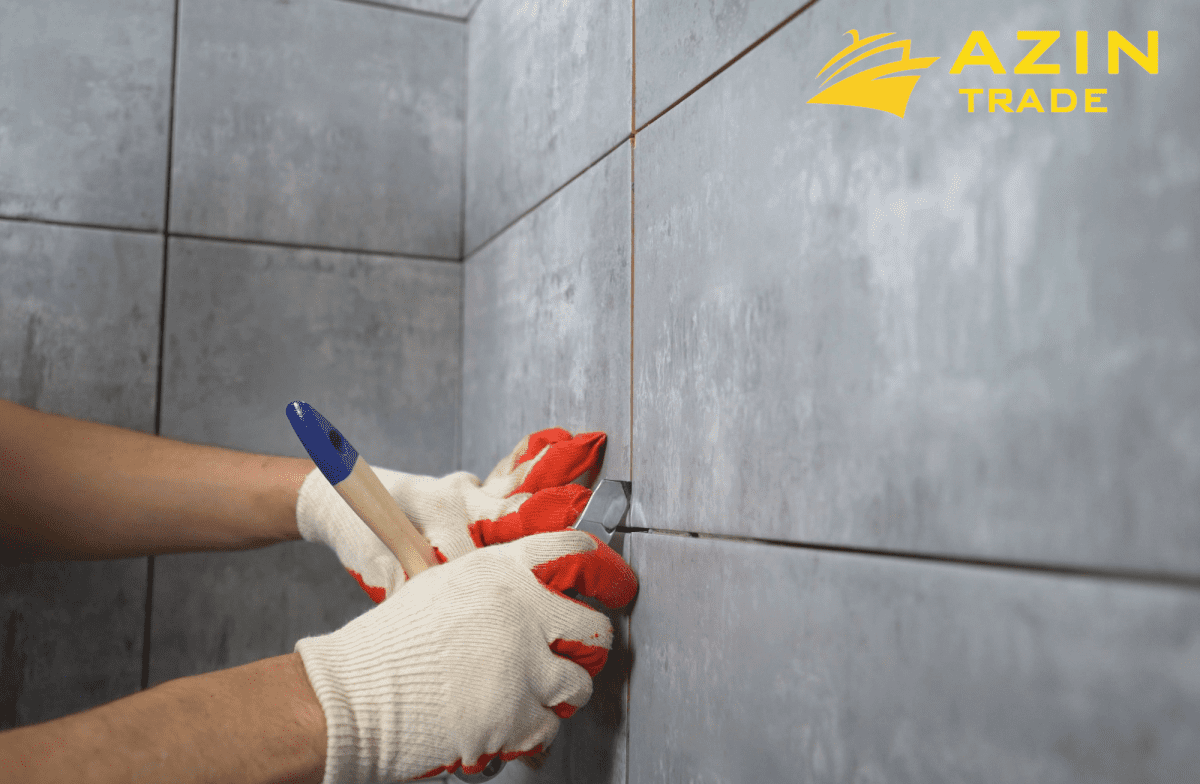Iran’s Tile and Ceramic Industry: A Growing Global Exporter
The tile and ceramic industry in Iran has emerged as a significant force on the global stage, driving international demand with its high-quality products, unique craftsmanship, and competitive pricing. Over the past few decades, Iran has developed an extensive manufacturing base supported by abundant natural resources, skilled artisans, and government-backed investments. This combination has propelled the country to become one of the largest exporters of tiles and ceramics in the world, serving a wide array of markets across Europe, Asia, and the Middle East.
A Rich History of Craftsmanship
Iran’s deep-rooted tradition in tile and ceramic production can be traced back thousands of years to ancient Persia, where intricate tilework adorned many palaces, mosques, and public structures. Persian architecture is globally renowned for its colorful mosaic tiles, which feature intricate geometric patterns and floral motifs. This rich history of craftsmanship has carried into the modern era, where artisans continue to produce high-quality decorative tiles, blending traditional techniques with cutting-edge technology. The integration of these historical influences has contributed to Iran's success in the international tile market, offering products that resonate with both modern and traditional aesthetics.
Natural Resources: A Competitive Advantage
One of the core strengths of Iran’s tile and ceramic industry is its access to a wealth of natural resources. The country possesses abundant reserves of high-quality raw materials, such as kaolin, feldspar, and silica, which are essential for ceramic production. These resources not only ensure a consistent supply of inputs for the domestic industry but also provide a significant cost advantage, allowing Iranian manufacturers to offer competitively priced products on the global market.
Moreover, the proximity of raw material sources to tile and ceramic production facilities reduces transportation costs and helps streamline the manufacturing process. This efficient supply chain enables Iranian producers to maintain quality control while keeping production costs low, further enhancing their competitiveness in international markets.
Expanding Export Markets
In recent years, Iran has significantly expanded its presence in global tile and ceramic markets, becoming a preferred supplier to various countries. Europe, Asia, and the Middle East are key regions where Iranian tiles are highly sought after for residential and commercial projects. Iranian products are particularly popular in countries like Iraq, Afghanistan, Azerbaijan, and Pakistan, where geographic proximity and cultural ties make them an attractive choice. However, Iranian tiles are also making inroads into European markets, particularly in Italy, Spain, and Germany, which are known for their own high standards in tile and ceramic production.
This growth in exports can be attributed not only to the quality and design of Iranian tiles but also to their affordability. Iranian producers offer tiles at highly competitive prices compared to European and other regional manufacturers. Despite trade restrictions and sanctions affecting other sectors, the tile and ceramic industry in Iran has managed to thrive, leveraging its strong supply chain and production capabilities.
Government Investments and Modernization
Recognizing the potential of the tile and ceramic industry, the Iranian government has made strategic investments to modernize production facilities and boost output. Several large-scale factories have been upgraded with the latest technologies, such as advanced kilns and automated production lines, enabling manufacturers to produce higher volumes and more sophisticated designs. This modernization has also improved the energy efficiency of the production process, reducing costs and increasing the sustainability of operations.
Additionally, the government has implemented policies aimed at fostering innovation within the industry. This includes offering incentives for research and development, as well as encouraging collaboration between universities, research institutions, and manufacturers. These efforts are designed to ensure that Iran remains at the forefront of global tile and ceramic production, continuously improving product quality and expanding its export potential.

Unique Designs and Product Range
What truly sets Iranian tiles and ceramics apart in the global market is the wide variety of designs and styles available. Iranian manufacturers produce everything from classic Persian motifs to contemporary patterns, catering to diverse tastes and preferences in different markets. The designs often feature vibrant colors, intricate geometric patterns, and delicate floral arrangements, reflecting the rich cultural heritage of the region.
Moreover, Iranian tiles are available in various sizes, shapes, and finishes, making them suitable for a wide range of applications, including flooring, walls, and decorative accents in both residential and commercial spaces. In recent years, the industry has also embraced modern trends, such as the production of larger tiles, marble-effect finishes, and anti-slip surfaces, which are becoming increasingly popular in high-end projects.
This versatility in design and product range allows Iranian tile manufacturers to meet the demands of architects, interior designers, and homeowners across different regions, further enhancing their export potential.
Overcoming Challenges and Navigating Trade Barriers
While the tile and ceramic industry in Iran has experienced considerable growth, it has also faced challenges, particularly in navigating international trade barriers and sanctions. These restrictions have complicated the process of exporting to certain markets, particularly in Europe and North America, where stringent trade regulations exist.
However, Iranian manufacturers have adapted by diversifying their export markets and focusing on regions where demand remains strong, such as Asia, Africa, and the Middle East. Countries like India, China, and Turkey have become key partners for Iran’s tile and ceramic exports, helping to offset the impact of sanctions. Moreover, the weakening of the Iranian rial has made Iranian products even more attractive to foreign buyers, as it allows them to purchase high-quality tiles at a lower cost.
Sustainability and the Future of the Industry
As the global construction industry increasingly emphasizes sustainability, the tile and ceramic sector in Iran is also adapting to meet these demands. Manufacturers are exploring ways to reduce the environmental impact of production, such as using recycled materials, reducing water consumption, and minimizing energy usage during the manufacturing process.
The government is also encouraging sustainable practices through regulations and incentives, pushing for greener production methods and the development of eco-friendly tiles. This focus on sustainability not only aligns with global trends but also enhances the appeal of Iranian tiles in environmentally conscious markets.
Looking ahead, the future of Iran’s tile and ceramic industry appears bright. With continued investments in technology, a strong commitment to innovation, and an expanding presence in global markets, Iranian manufacturers are well-positioned to capitalize on the growing demand for high-quality, affordable tiles. As the global construction and interior design industries continue to evolve, Iran’s tile and ceramic sector will likely play an increasingly important role, offering a unique blend of tradition and modernity to meet the needs of a diverse range of customers.
Conclusion
The tile and ceramic industry in Iran stands as a testament to the country’s rich history of craftsmanship and its ability to adapt to modern market demands. With its abundant natural resources, skilled workforce, and growing export capabilities, Iran has solidified its position as a key player in the global tile and ceramic market. As the industry continues to innovate and expand, Iranian tiles and ceramics are expected to remain a popular choice for residential and commercial projects worldwide. The combination of unique design, durability, and affordability makes Iranian tiles a compelling option for customers seeking high-quality products with a touch of cultural heritage.




